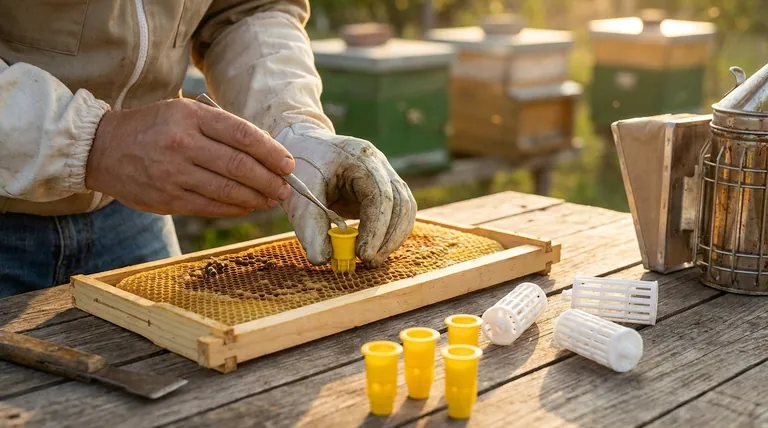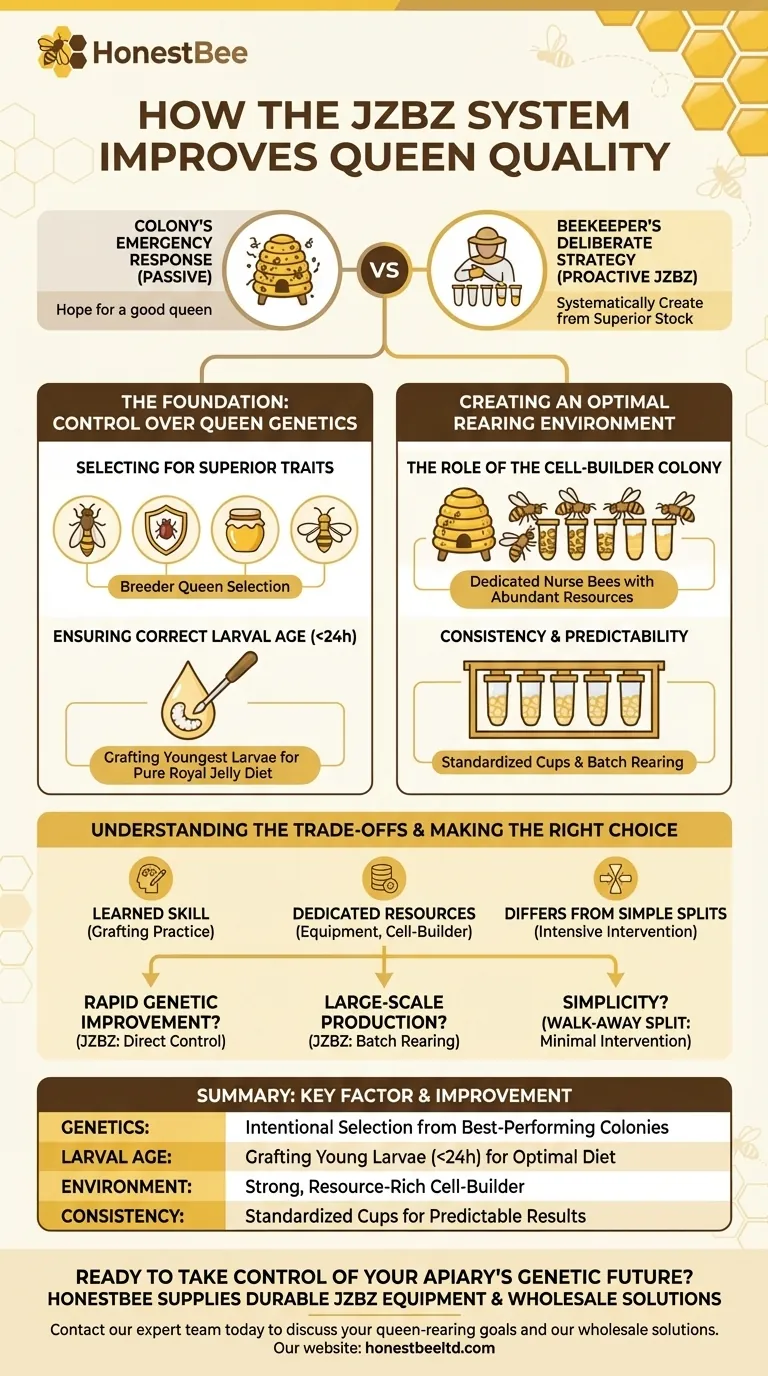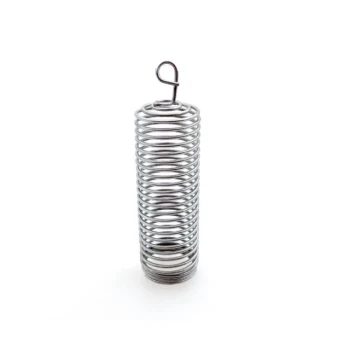At its core, the JZBZ system improves queen quality by giving the beekeeper precise control over the two most critical factors in a queen's development: genetics and environment. Instead of leaving queen rearing to chance, this method allows for the intentional selection of larvae from the best-performing colonies and ensures they are raised under optimal conditions from their very first day of life.
The fundamental advantage of the JZBZ system is that it replaces the colony's emergency response with a beekeeper's deliberate strategy. You are no longer hoping for a good queen; you are systematically creating one from superior stock.

The Foundation: Control Over Queen Genetics
The quality of any queen begins with the egg she came from. The JZBZ system allows the beekeeper to act as the primary architect of the apiary's genetic future.
Selecting for Superior Traits
The most significant impact on quality comes from choosing your breeder queen. With this system, you can select larvae from your most desirable colony—one that exhibits strong mite resistance, high honey production, gentleness, or other key traits.
This immediately elevates the genetic potential of your new queens far beyond what a random "walk-away split" could produce, where the bees might choose a larva from a less-than-ideal queen.
Ensuring the Correct Larval Age
The JZBZ system facilitates grafting, the process of transferring very young larvae (ideally less than 24 hours old) into the provided plastic queen cups.
This is critical. A larva destined to be a queen must be fed a diet of pure royal jelly from the very beginning to ensure the full development of her ovaries and essential glands. By selecting the youngest larvae, you guarantee they receive this treatment from the start.
Creating an Optimal Rearing Environment
Great genetics are only half the equation. A queen must be raised in an environment that allows her to reach her full potential.
The Role of the Cell-Builder Colony
Grafted JZBZ cups are placed into a strong, queenless "cell-builder" colony. This hive is packed with young nurse bees that have one overwhelming instinct: to raise new queens.
Because they have no other brood to care for, they devote all their resources to feeding the grafted larvae, providing them with more than enough royal jelly for robust development.
Consistency and Predictability
The durable, uniform JZBZ plastic cups provide a consistent structure for queen cell development. This standardized approach simplifies management and helps ensure a high success rate.
Raising multiple queens in the same cell-builder hive at the same time ensures they all develop under the same ideal conditions, leading to predictable, high-quality results.
Understanding the Trade-offs
While effective, the JZBZ system is a specific tool with its own set of requirements and challenges. It is not a passive process.
It Is a Learned Skill
Grafting requires a steady hand, good eyesight, and practice. Selecting and transferring a tiny, fragile larva without damaging it is a delicate task that improves with experience.
It Requires Dedicated Resources
The system itself requires purchasing the JZBZ cups, cell bars, and frames. More importantly, it requires dedicating a strong colony to act as a cell-builder, a hive that could otherwise be focused on honey production.
It Differs From Simple Splits
Some methods involve simply splitting a colony and letting the queenless half raise an emergency queen. The JZBZ system is a more intensive and controlled grafting process, not to be confused with a basic split. The quality comes from the beekeeper's deliberate intervention, not the colony's emergency response.
Making the Right Choice for Your Goal
Deciding to use the JZBZ system depends entirely on your objectives as a beekeeper.
- If your primary focus is rapid genetic improvement: The JZBZ system gives you direct control to breed queens from your absolute best stock.
- If your primary focus is producing a large number of queens: This system is designed for batch production, allowing you to raise dozens of queens simultaneously.
- If your primary focus is simplicity and minimal intervention: A simple walk-away split is an easier, though far less controlled, method for making colony increases.
Ultimately, the JZBZ system is a powerful tool for any beekeeper looking to take proactive control over the health, productivity, and future of their apiary.
Summary Table:
| Key Factor | How JZBZ System Improves Quality |
|---|---|
| Genetics | Enables intentional selection of larvae from best-performing colonies for superior traits. |
| Larval Age | Facilitates grafting of young larvae (<24h) for optimal royal jelly diet from day one. |
| Environment | Uses a strong, dedicated cell-builder colony for consistent, resource-rich rearing conditions. |
| Consistency | Standardized cups and batch rearing ensure predictable, high-quality results. |
Ready to take control of your apiary's genetic future?
As a commercial beekeeper or equipment distributor, the quality of your queens directly impacts your bottom line. The JZBZ system is the professional tool you need for intentional, large-scale queen rearing.
HONESTBEE supplies the durable, precision JZBZ equipment and wholesale beekeeping supplies that commercial operations rely on. Let us help you build a more productive and resilient apiary.
Contact our expert team today to discuss your queen-rearing goals and our wholesale solutions.
Visual Guide

Related Products
- Jenter Queen Rearing Kit Complete Set for Bee Breeding
- No Grafting Queen Rearing Kit: System for Royal Jelly Production and Queen Rearing
- Nicot Queen Rearing Kit for Beekeeping and Grafting in Nicot System
- JZBZ Langstroth Queen Rearing Frame for Beekeeping
- Plastic Chinese Queen Grafting Tool for Bee Queen Rearing
People Also Ask
- What were the size differences among queens reared from worker larvae? Maternal Origin Determines Queen Size
- What is the timeline for queen breeding? A 28-Day Guide from Egg to Laying Queen
- What are the implications of delayed oviposition in queen bees? A Strategy for Superior Queen Quality
- How long does it take for a new queen to emerge, mate, and lay eggs? A Beekeeper's 10-14 Day Guide
- What is queen rearing in beekeeping? Take Control of Your Apiary's Genetics



















